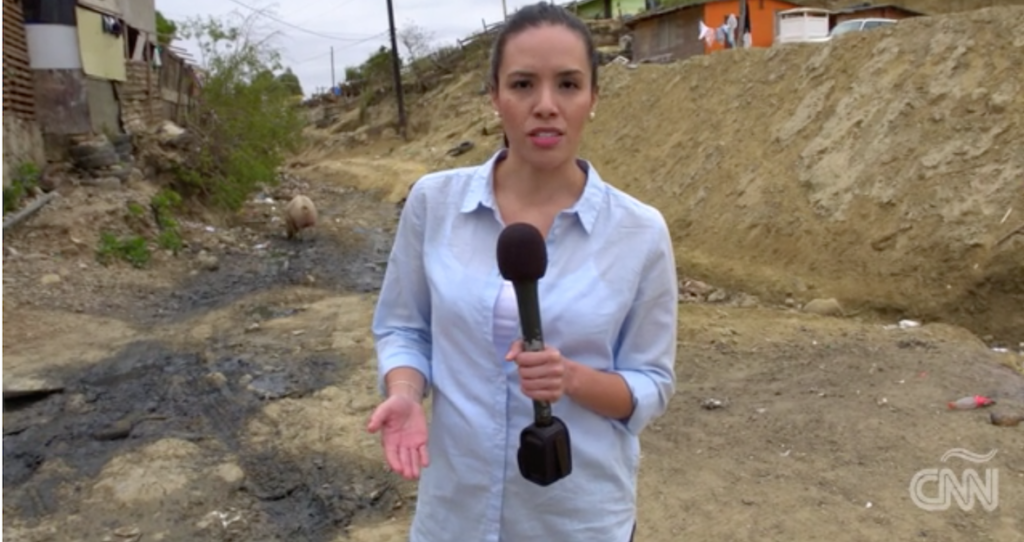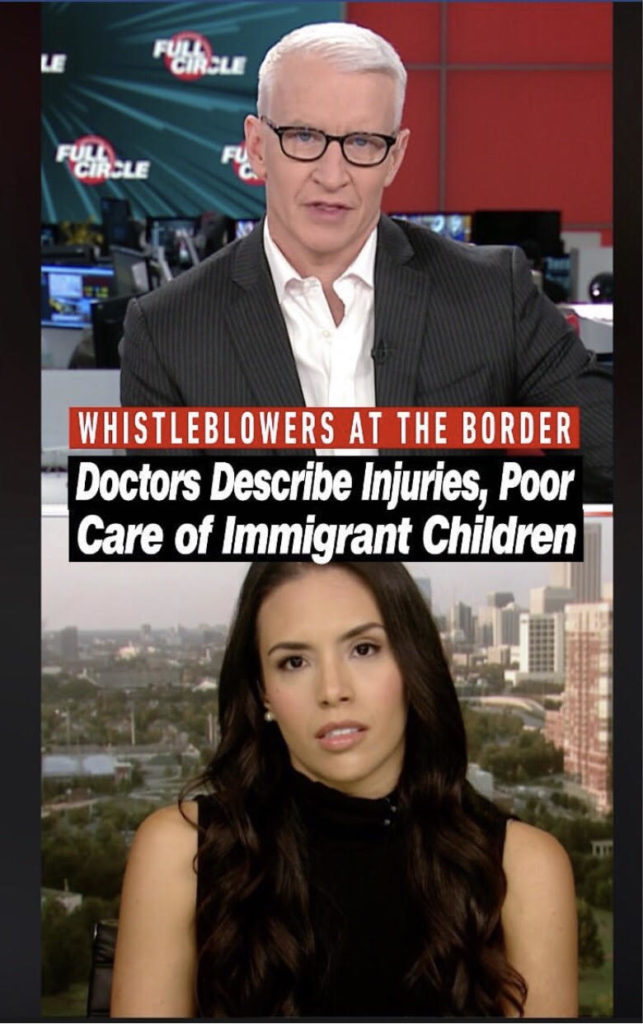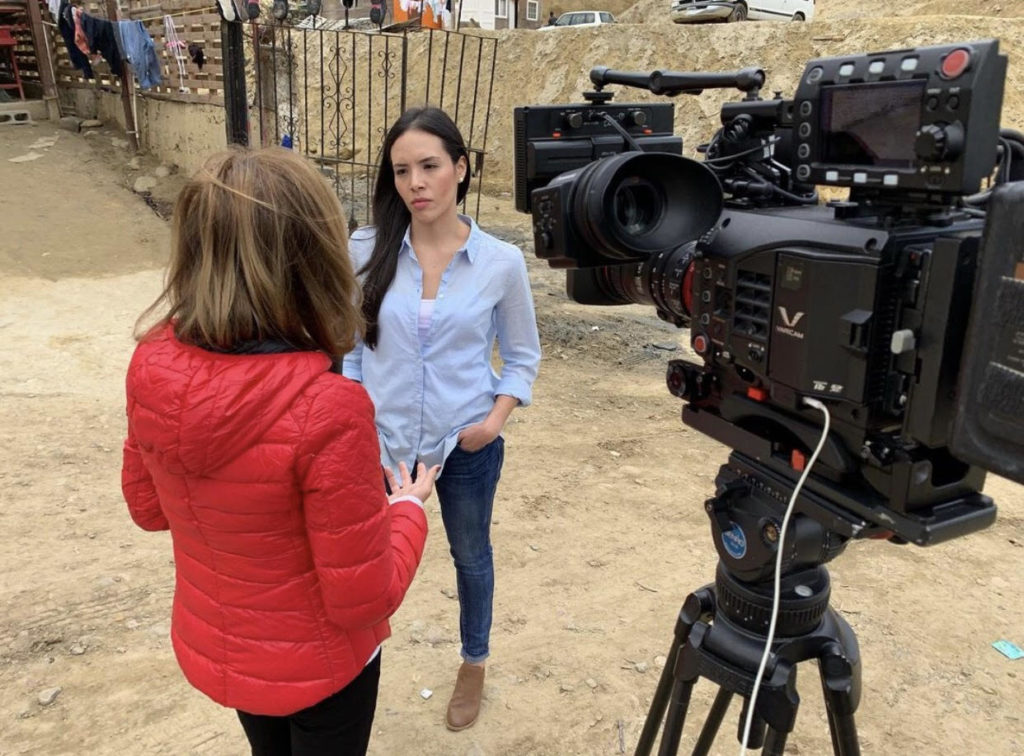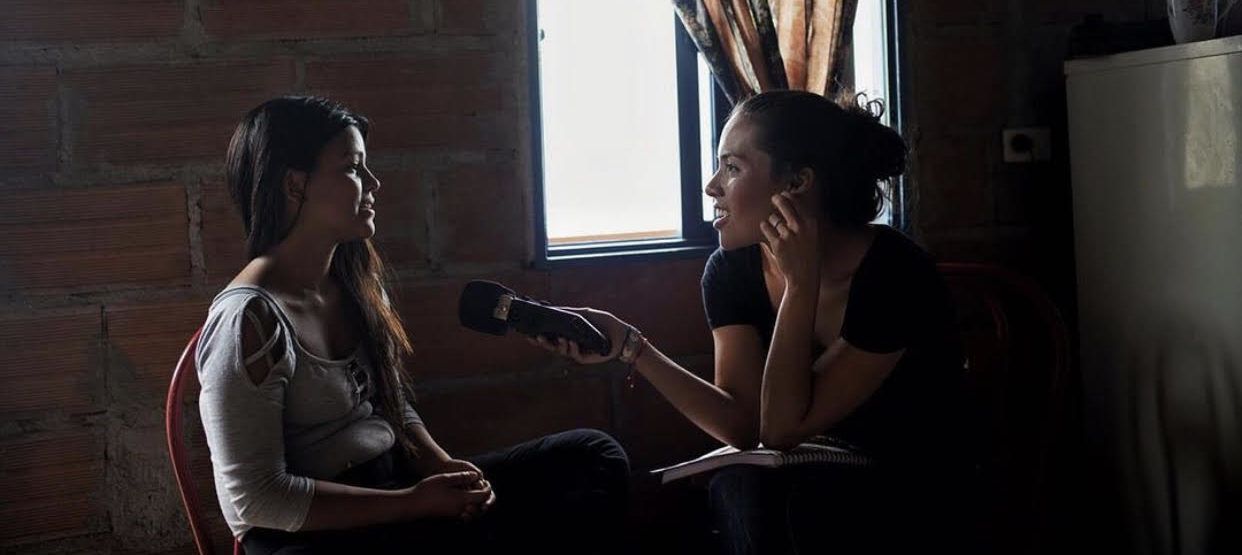Published: 01/08/2021
When a basic understanding of public health can save lives, the Stanford Global Health Media Fellowship is showing doctors how to best convey information to have impact beyond the clinic.
By Lucas Oliver Oswald
Journalists will tell you that nothing can prepare you for the breakneck pace of a newsroom, not even a degree in journalism. You are suddenly responsible for researching, interviewing experts, and writing or reporting on issues on a daily basis. If you can’t get a comment from a source in time, you don’t have the luxury of waiting as you might have during school — you find someone else to comment and you find them fast.

For Gina Yu, a medical student taking a year off to pursue a fellowship on global health reporting, the whiplash was taken one step further. Her manager was showing her to her desk on her first day on the CNN Health team in Atlanta, when he paused and asked, “Do you happen to know anything about coronaviruses?”
It was January 21, 2020. The first case of the novel coronavirus had just been confirmed in Seattle.
Fresh out of one quarter of Stanford’s Master’s in Journalism program, Gina was one of just a handful of CNN Health team members with formal medical training, two of which were anchors Dr. Sanjay Gupta and Elizabeth Cohen, MPh. Gina was still a medical student, but those three years of training were about to become a major asset to the newsroom.
Learning and unlearning
Global health has a two-fold communications problem.
Firstly, it is hindered by the basic complications of health reporting: conveying complicated medical principles to the public in a way that effectively influences public health requires expertise in both science and storytelling.
Secondly, it is challenging to make global health relatable. You-should-care journalism generally falls flat, and global health for the most part deals with problems and people in far away places, with little perceived effect on audiences in high-income-countries.
It’s a rare journalist that delivers the one-two punch of storytelling and medical knowledge, and it’s an even rarer doctor that can tell their own story and the accurate portrayal of medicine and health in practice. Too often the narrative is told by others.
For these reasons, Dr. Michele Barry, Director of Stanford’s Center for Innovation in Global Health, began Stanford’s Global Health Media Fellowship in 2011, the first of it’s kind and unique in it’s prestigious partners and global opportunities. Since then, nine fellows have taken a year away from their medical training to hone their communications skills, work as an intern at a health desk in a newsroom, and go on to report on an unfolding health topic abroad.

“Effective health communication can be a remedy to many problems in global health,” says Dr. Barry, “but it can also be prevent crises from unfolding. Doctors fail the public when they fail to convey essential health information.”
Gina Yu was a 3rd year medical student when she began the global health media fellowship. After spending the fall taking classes in Stanford’s journalism program, she moved to Atlanta to join the CNN Health team, the second component of the fellowship.
The fellows may enter the newsroom with limited experience in journalism, but they make up for it in medical expertise.
“They are able to help us make sense of the latest scientific literature and present that to our audience in a way that makes sense,” said Ben Tinker, Executive Producer at CNN Health. “During the pandemic especially, with so many press releases and academic papers sent out every day, they are uniquely able to distill important research into understandable terms and concise language for our readers.”
Having a medical background may get you to the answers faster when reporting on health, but communicating that answer when you come from a world of medical vernacular and jargon is an entirely different skillset. During their quarter of classes at Stanford, the fellows take classes in reporting, multimedia, and data journalism. At CNN, the speed of the work doesn’t just increase — so do the stakes — and suddenly they have to become experts in script writing for TV, podcast production, writing for digital, and social media engagement.
“Doctors fail the public when they fail to convey essential health information.”
Dr. Michele Barry, Director of Stanford’s Center for Innovation in Global Health
“For as much as they bring to the table, as much as they teach us, we also have a lot to teach them in that brief period of time,” says Tinker. “We make sure every fellow works with every member of the team so that they leave with a new set of skills.”
“In medical school, you develop some habits that are great for doctors, but bad for journalism,” said one fellow, Michael Nedelman, who continues to work at CNN Health today as a producer. “The fellowship undoes some of that behavior for communicating with the public.”
For example, doctors are notorious for burying the lede, not because they are bad communicators, but because it is the correct scientific approach to practicing medicine.
“In medical school, when you’re presenting a patient, it’s a slow roll to the diagnosis,” Nedelman explained “You’re taught to present the basic facts first and eventually you get to the assessment and treatment plan. In journalism it’s the exact opposite. You lead with the most important parts to draw the reader in.”
Communicating a Pandemic
Ordinarily fellows conclude their year with a self-directed capstone project abroad, reporting on an important global health story before returning to their medical training. Projects have ranged from reporting on pediatric migrant health on the Venezuela-Colombia border to photojournalism in Haiti and video reporting on infectious diseases in Laos.
Gina planned to conclude her fellow year in Ethiopia with the Himalayan Cataract Project and in Lebanon reporting on the health aspects of Syrian refugees there, but her plans were disrupted by the pandemic.

It was an unfortunate turn of events, but this was mid-March and the CNN Health team was also suddenly busier than ever. Everyday presented a new flood of scientific literature and press releases about COVID-19. Jamie Gumbrecht, Gina’s digital editor, along with Ben Tinker and the rest of the CNN Health team, saw an opportunity.
“We jumped at the opportunity to extend Gina’s time with us,” said Gumbrecht. “She was such an integral member of the team at that point. We kept her as long as we could, and we’d take her back in a heartbeat. If she called me today and said, ‘I am available,’ I would say, ‘Amazing. You want to start tonight?’”
Once the program concludes, fellows return to their medical education, but many find their way back to the newsroom. Some fellows, like Nedelman, find fulltime reporting positions, and of those who go on to research and clinical appointments, almost all found ways to stay deeply involved in media, with many going on to frequently contribute articles and make television appearances.
One fellow, Dr. Edith Bracho-Sanchez, is now a pediatrician and faculty at Columbia University, but she still contributes articles to a variety of publications and makes frequent live appearances on CNN and Univison, reporting in both English and Spanish.
“I have to shed light on these issues,” she told me. “In this country, there are very big disparities in both the amounts and the quality of information that disadvantaged communities receive. As I progressed along my medical training, I saw how impactful being informed was to the health of my patients. What I saw in clinic was chronic disease from a lack of knowledge about the many lifestyle factors that impacts our health.”
Others have created different means of impact with their training.
Kristina Krohn completed the fellowship in 2013 and is now an internal medicine and pediatric hospitalist and assistant professor at the University of Minnesota, but she has also used her fellowship training to pioneer a health communications curriculum for 3rd and 4th year medical students. So far, she has trained 300 students on how to work with the media to serve their public health goals.
“Medical schools rarely offer courses like this.” Dr. Krohn said “Most doctors finish their training without any education communicating medicine with lay audiences, but this expertise opens up new modes of advocacy for doctors; it helps them expand their impact from individuals to the public.”
Filling the Healthcare Gap
In speaking to many of the past fellows, I noticed a common theme surface again and again. For many of them, the major motivating factor for their media work was the lack of public health information targeting minority and underserved populations. Take Dr. Bracho-Sanchez, who sees her writing and TV appearances as a means for filling that gap, but she also deploys other communication tools.

Dr. Bracho-Sanchez recently launched “Las Doctoras Recomiendan,” a podcast distributed by Univision. The podcast targets Latino families and covers a range of different health topics in pediatrics, from COVID-19 to nutrition and sleep. Through the podcast and an accompanying Q&A program on social media, Dr. Bracho-Sanchez aims to arm a demographic that the American healthcare system has systematically neglected.
This extends into advocacy as well.
“I see the families who can’t afford to buy food anymore, families that are rationing,” Dr. Bracho-Sanchez told me. “I see them forced to make choices that are understandable but unacceptable, choosing food over health, paying for food over medication. These are the downstream effects of American policy ending up in the clinic. I have to bring it to the public’s attention.”
The same is true for Gina. Gina’s parents are both immigrants from Korea, and at a young age she witnessed the consequences of poor healthcare when her father lost his vision from an avoidable medical problem.
“I see the families who can’t afford to buy food anymore, families that are rationing. I see them forced to make choices that are understandable but unacceptable. These are the downstream effects of American policy ending up in the clinic. I have to bring it to the public’s attention.”
Dr. Bracho-Sanchez, director of pediatric telemedicine for NYP’s Ambulatory Care Network, assistant professor of pediatrics at Columbia, and past Global Health Media fellow
“He felt marginalized by the healthcare system, as someone who had no health insurance and did not speak English. He is still unsure of what happened.”
Gina views this as a problem of health equity and health literacy, both of which disproportionately affect immigrant families. Today, she not only attributes her choice to go into medicine to her father’s condition, but also her choice to go into journalism.
The Burden and the Privilege
This year delivered the ultimate validation for global health reporting. We no longer need to convince people that the health of someone in Yemen or Sao Paolo or Wuhan can affect the health or wellbeing of someone in San Francisco. And yet, audiences are still struggling to understand basic concepts in public health. Traditional journalists can be very effective health communicators, but doctors trained in global health reporting retain different skills, and more importantly, different motivations.
For those who do not have easy access to healthcare, a lack of health information can be a death sentence. Global health doctors see this first hand, and the fellows go on to see it in even closer detail through their reporting. If the fellows are any indication, those experiences help shape careers aimed at targeted health communications to those who need it most.
“Health misinformation is debilitating to disenfranchised communities no matter where you are in the world,” says Michele Barry. “But global health practitioners have the privilege and the burden of seeing it in its most acute form.”

For the fellows, these perspectives and skills tend to coalesce into a paradigm of advocacy for the world’s poor through the media, whether those demographics are here in the US or abroad.
“I want to stay active in media and journalism to advocate for people without immediate access to healthcare, to bring power to the stories of people like my family and encourage positive change,” Gina says. “By providing that platform that can teach audiences around the world, medical journalism is a powerful tool for public health.”
